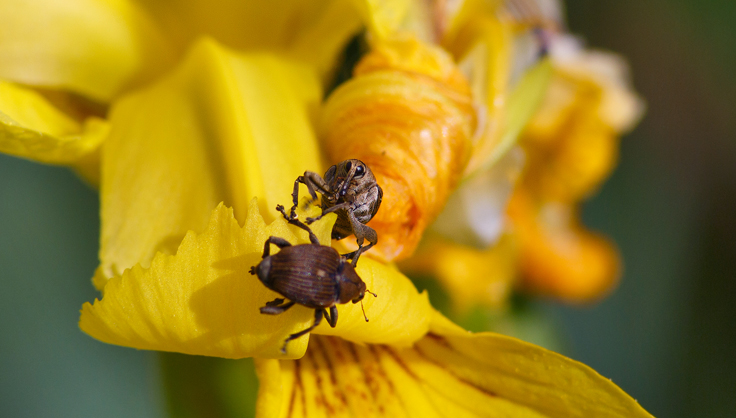Curculio
 Photo by: Maxime Raynal
Photo by: Maxime Raynal
Often called "plum curculio," this beetle with the long, curved snout is a common pest of apples, peaches, cherries, apricots, pears, and plums, but only east of the Rocky Mountains and primarily in the north. They're a diminutive 1/4-inch long, so they're not easy to spot. That's why you're more likely to see the damage they cause: Initially they make small, circular scars in the skins of developing apples and pears under which they lay eggs. After hatching, the larvae tunnel into the fruits leaving browned and mishapen fruits. Often trees abort the damaged fruit prematurely.
Adult beetles survive winter hiding among fallen leaves and garden debris. They become active just about the time apples bloom, and that's the most important time to take preventative action.
Controls
- There is no trap or botanical spray that will control curculio. But the insect does have the curious habit of playing dead when surprised, a habit you can use to your advantage. Each morning for three weeks after petal fall, spread sheets under your tree or trees. Shake or jar the tree. The beetles will fall onto the sheets which allows you to collect and dispose of them.
- If you own chickens, corral them under your tree before the shake and they'll collect and dispose of them for you.
- Always pick up and destroy fruit that falls to the ground. This step alone will diminish a curculio population substantially.
- Some gardeners use the organophosphate insecticide, phosmet (Imidan) to control curculio. Compared to most of its insecticide relatives, it is safe and fast to decompose. Nevertheless, it is toxic to honeybees so never use it when pollinators are active.
Print this Article:
Get the Dirt
Stay up to date on new articles and advice. Please fill out the information below.
